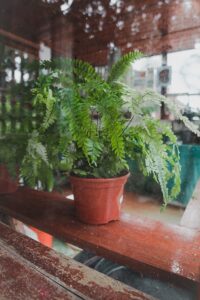
Introduction:
In today’s fast-paced and increasingly urbanized world, using plant hydration to create a healthy and nurturing environment at home has never been more important. One way to achieve this is by incorporating indoor plants into your living spaces. Not only do they add a touch of nature to your decor, but many plants also offer a range of benefits, including improved air quality and healthier skin. In this blog post, we’ll explore some of the best plants for hydrated skin & clean air.
Aloe Vera: The Skin Soother
Aloe vera is a popular succulent known for its soothing properties. It’s not only a fantastic natural remedy for skin irritations, burns, and cuts but also acts as an air purifier. Aloe vera releases oxygen at night, making it an excellent addition to your bedroom for a restful night’s sleep.
Snake Plant: The Air Purifier
Also known as the mother-in-law’s tongue, the snake plant is a hardy, low-maintenance plant that excels at purifying the air. It removes toxins like formaldehyde and benzene and releases oxygen during the night, promoting better air quality while you sleep. Snake plants are also known for their ability to add moisture to the air, preventing dry skin and respiratory issues.
Spider Plant: Humidity Hero
Spider plants are effective at increasing humidity levels, making them an ideal choice for drier indoor environments. Maintaining optimal humidity is essential for preventing dry skin, especially during the winter months. Spider plants are easy to care for and produce “pups,” or baby spider plants, which can be repotted and shared with friends to spread the benefits.
Ferns: Moisture Enthusiasts
Ferns thrive in humid conditions and are adept at adding moisture to the air. Boston ferns (Nephrolepis exaltata), in particular, are popular for their lush foliage and their ability to thrive in humid conditions, and improve indoor air quality. As it transpires water, it can help improve the overall humidity in a room, benefiting both the plant and the surrounding environment.
FLOWER POWER
While most flowers are not specifically known for adding moisture to the air, certain plants, including some flowering varieties, can indirectly contribute to increased humidity. Here are a few flowers and plants that may help enhance humidity levels:
Peace Lily: Skin Hydration Specialist
Peace lilies (Spathiphyllum) are not only beautiful with their elegant white blooms, but they also contribute to healthier skin during dry seasons. These plants are excellent at increasing humidity and can alleviate dry skin issues. Peace lilies are known to filter out common indoor air pollutants, making them a valuable addition to any room.
Gerbera Daisy:
Gerbera daisies (Gerbera Jamesonii) are not only vibrant and beautiful but can also release moisture into the air through a process called transpiration. While they may not be as effective as some foliage plants, they still contribute to a more comfortable indoor environment.
Orchids:
Orchids are elegant flowering plants that can add a touch of sophistication to your home. While they do not significantly increase humidity levels, they release moisture through their leaves, contributing to a slightly more humid atmosphere.
Bromeliads:
Bromeliads are tropical plants with unique, colorful blooms. They absorb moisture through their leaves and can increase humidity in their immediate surroundings. They are relatively low-maintenance and can be a visually appealing addition to your indoor space.
It’s important to note that while these flowers contribute to humidity, they may not have as pronounced an effect as some non-flowering plants specifically adapted to thrive in humid conditions. Additionally, maintaining an appropriate level of humidity in your home involves factors such as proper watering, grouping plants together, and avoiding excessive air conditioning or heating. Always consider your specific indoor environment and the care requirements of the plants you choose to ensure their well-being and optimal performance.
Conclusion:
Transforming your home into a green oasis not only enhances the aesthetic appeal but also contributes to your overall well-being. The best indoor plants for better skin and increased moisture in the air are those that offer a combination of air-purifying properties and humidity control. Make sure to have someone tend to your plants while you travel, so they don’t die while you’re away.
By carefully selecting and caring for these plants, you can create a healthier and more pleasant indoor environment for both you and your skin. So, go ahead, embrace the greenery models, and let nature work its magic within the comfort of your home.
Author: Danielle N. Mott
